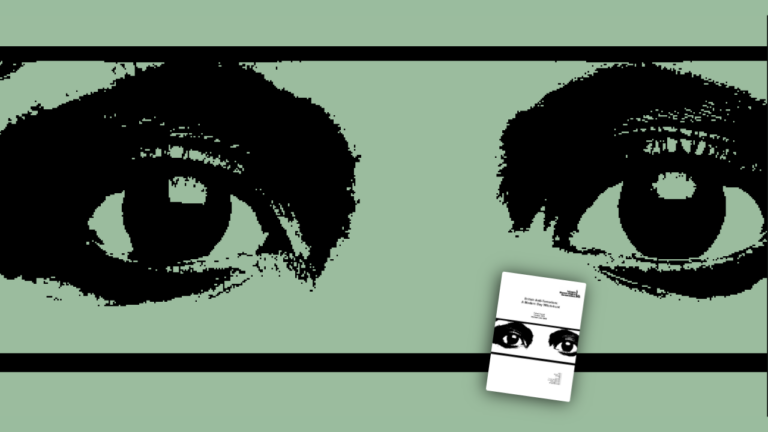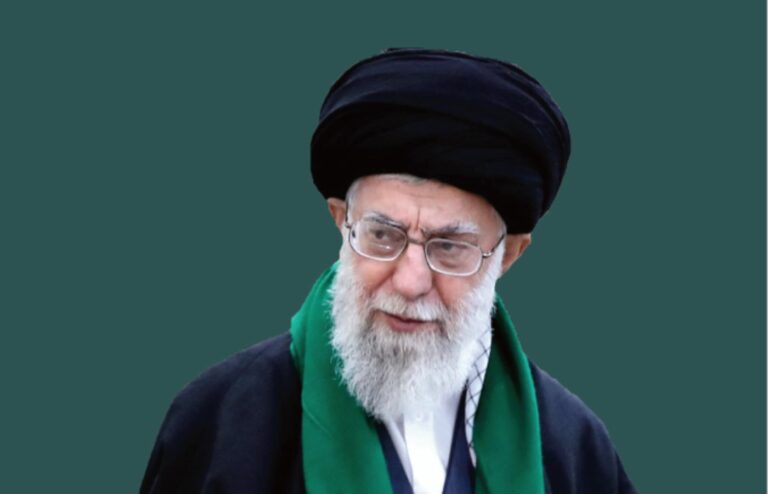—————————————————————
Islamic Human Rights Commission
—————————————————————
27th September 2003
Briefing: Hinduvata bans freedom of religion in India
Tamil Nadu and Gujarat draft anti-conversion laws
In October 2002 and April 2003 Hindu fundamentalists in the Indian states of Tamil Nadu and Gujarat succeeded in passing anti-conversion laws. These laws intend to prevent Dalits, ‘untouchables’ or low-caste Hindus, converting to non-Hindu faiths, especially Islam and Christianity. The second objective of the anti-conversion laws is to further marginalise India’s Muslim and Christian populations in the quest for ‘Hinduvata’ or an all-Hindu India. With a total of six Indian states operating such laws, the fear is that other states may follow suit.
Indian pluralist framework under siege
From the coming to power and influence of Indira Gandhi in the late 1970s, India’s secular and pluralist framework has been under siege for the last quarter century. Indira Gandhi’s rule witnessed a gradual shift away from the secular legacy imparted to post-independence India by its founder and first president Jawaharlal Nehru (also father of Indira Gandhi). Indira Gandhi’s lurch to the right saw an increased pandering towards Hindu chauvinism along with the increased marginalisation of important and substantial religious minorities such as India’s 150 million Muslims and Punjab’s Sikhs. By the late 1980s under Rajiv Gandhi Congress (I)’s fifty-year political consensus over India began to falter and the still obscure extreme-right Hindu fundamentalist movement began its emergence from India’s political fringe.
Cometh Hinduvata: Electoral emergence of the BJP
The nation-wide emergence of the fascist BJP in the early 1990s witnessed India’s Hindu fundamentalist movement steadily occupy national and regional power. This newly acquired confidence was demonstrated in the 1992 India-wide communal strife initiated by the BJP and its sister organisations over the dispute surrounding the 16th century Babri mosque at Ayodhya. The BJP leadership responsible for then India’s most bloody communal violence since partition now runs India, with the BJP leader Atal Behari Vajpayee as India’s current prime minister.
Since the late 1990s the BJP has lead a coalition national government. This has permitted the right-wing BJP and its Hindu fundamentalist ideologues to further pressurise and discriminate against India’s Muslim and Christian minorities, develop the ‘Hindu nuclear bomb’, accelerate military hostilities and human rights abuses in the predominately Muslim state of Kashmir and effect confrontation with neighbouring Pakistan. Late 2003 saw the BJP consolidate its electoral grip over important Indian states such as Gujarat, which witnessed the bloody 2002 anti-Muslim massacres under the BJP state administration (see IHRC report ‘Gujarat: The ongoing genocide’).
Hindu fundamentalist movements and the all-Hindu polity
Taking their cue from the fascist programmes of Mussolini and Hitler, the BJP and its ideological parent the quasi-paramilitary RSS (Rashtriya Swayamsevak Sangh) and its sister organisation the VHP (World Hindu Council) have succeeded in pushing their racist agenda of Hinduvata to national prominence and centre stage in India’s political life.
The Hinduvata programme conceives India as an all-Hindu polity. The main target of the Hinduvata campaign is India’s Muslims. The mere physical existence of Muslims is considered as an objectionable and historically disruptive factor. Many within the Hindu fundamentalist movement openly talk of culturally and physically cleansing India of its Muslim population, much akin to Serbian ethnic cleansing campaigns of Muslims in the former Yugoslavia. Thus, the Hindu fundamentalist movement collectively posits two choices for Indian Muslims; either convert to Hinduism or face death.
Dalit (Low-caste Hindus): Conversion to non-Hindu faiths for human dignity
There are an estimated 160 million Dalits in India, constituting 16% to 20% of the entire population. Under the insurmountable caste system they suffer the indignity of ‘untouchability’, view by Hindus of middle and high castes as not just symbolically unpure, but more so physically (see www.dalitstan.com).
This has lead to their virtual exclusion from mainstream society. They are not permitted to enter Hindu temples, draw water from the same wells as other Hindus and live under a system of apartheid, confined to certain urban and rural quarters or geographical locales. Violence is a daily theme for Dalits and higher caste Hindus murder and rape Dalits with de facto impunity. Furthermore, Dalits are often excluded from or segregated in schooling, the job market and other socio-economic amenities. India’s Dalit population is characterised by epidemic poverty and poor health.
Defenders of the caste system, claim that its practice is sanctified by Hindu religious texts.
In order to escape the oppression of the caste system and to repudiate their ‘untouchibility’ status, Dalits often turn to non-Hindu faiths. Dalits have historically and still do opt to convert to Islam, Buddhism or Christianity. As one Dalit convert to Buddhism elaborated in a 2001 BBC interview: “It is our mental liberation that conversion is aimed at. If we gain confidence, then the higher castes will, eventually, be compelled to change too”.
The historic bulk of converts to Islam in India and the wider Indian Sub-Continent were drawn from lower-caste Hindus, including Dalits, eager to escape the discrimination and limitations of the Hindu caste system. The same was true with historic and contemporary conversions to Buddhism and Christianity. Within the last several years Dalits have threatened mass conversions to Buddhism, Christianity (both recent evangelical Protestant Christianity and the more established Syrian Orthodox Church in the southern state of Kerala) and Islam. Increased evangelical Christian activity and conversion amongst Dalit and tribal groups in recent years, as well as the continued trickle of small Dalit groups to Islam, has invoked the ire and anger of extreme-right wing Hindu fundamentalists. Their insecurity surrounding voluntary conversions prompted the passing of anti-conversion laws in the southern state of Tamil Nadu and the western state of Gujarat.
Brahmanic chauvism: Pre- and post-independence anti-conversion laws
Anti-conversion laws are not recent phenomena in India. Prior to 1947 several princely states passed such laws e.g., the Sarguja State Apostasy Act (1945), Udaipur State Anti-Conversion Act (1946). Post-independence India saw Congress (I) attempt to pass similar national laws, but its evident bias against Muslims and other minorities saw it fail. Nevertheless an array of discriminatory and sectarian national laws saw their way onto India’s statue books. These imported various legal penalties for ceasing to be a Hindu upon conversion to a non-Hindu faith. These legislative acts were: the Hindu Minority and Guardianship Act 1956; the Hindu Adoption and Maintenance Act 1956; the Hindu Marriage Act 1955 and; the Hindu Succession Act 1955. Although it was claimed that these acts were designed to discourage “forced” conversion, Dalit and other low-caste groups claim that the legislation was to prevent their conversion to non-Hindu religions, especially Islam and Christianity and hence keep low-caste Hindus in Hinduism. Many point to the clauses in the laws which allow the ‘reconversion’ of previously low-caste Hindus to Hinduism as evidence of this.
Towards the end of the 1960s and 1970s various states passed anti-conversion laws in response to Hindu sensitivities over (low-caste) Hindu conversions to non-Hindu faiths. Orissa state passed the Freedom of Religion Act 1967; Madhya Pradesh state passed its version, Dharma Swatantraya Adhiniyam 1968 and; Arunachal Pradest state passed the Freedom of Religion Act 1978. The Union Territory of Tripura also passed similar local legislation. Furthermore, following the 1981 Meenakshipuram conversion of thousands of Dalit and other low-caste Hindus to Islam in Tamil Nadu, the then Congress (I) Ministry of Home Affairs urged all states to adopt similar anti-conversion laws along the lines of the above states. This call was resurrected by the BJP’s anti-Muslim national president, Venkaiakh Naidv, during its October 2002 electoral campaign in Gujarat.
Overview of anti-conversion laws in Tamil Nadu and Gujarat
On October 5 2002 the pro-Hindu fundamentalist leadership of Tamil Nadu passed the Prohibition of Forcible Conversion of Religious Ordinance Act. In April 2003 the BJP fascist administration in Gujarat passed its version, the Dharam Swatantrata Vidheya. The laws have come under severe local, national and international criticism.
Dalit groups and leaders claim that the recent laws are designed to prevent them to convert them to non-Hindu faiths, especially Islam and Christianity and to perpetuate their caste-based bondage. Minority groups such as Muslims and Christians claim that the laws are intended to restrict their religious freedoms and criminalise their activities.
In defence of the anti-conversion laws Hindu fundamentalists claim that they are intended to prevent forced or coerced conversions, especially of low-caste and tribal groups. However, as pointed out by many critics of the laws, there is no evidence of alleged forced conversions to non-Hindu faiths, including Islam and Christianity, in contemporary India. Both the Tamil Nadu and Gujarat laws have been condemned as being unduly “vague”, “unspecific” and based on “presumption”. The Tamil Nadu act illustrates this in the claim that its legislative provisions are motivated by conversions that disturb ‘public order, morality and health’, despite no evidence for such conversions. Its vague definitions as to what constitutes forced or coerced conversions are “allurements” and “attempt to convert”. The law further imposes a three year imprisonment and a heavy fine. The Gujarat law is worded in a similar fashion. It adds a clause which makes it compulsory to seek permission from a magistrate to convert to Islam or Christianity. However, the law exempts Buddhists, Sikhs and Jains, as Hindu fundamentalists, much to objection of these three faiths, determine them to be offshoots of Hinduism.
The ambiguous and discriminatory anti-conversion laws deliberately leaves the scope for misuse against Muslims and Christians wide open, especially those involved in social and educational projects e.g., AIDS awareness, water access, etc. Indeed this has already been the case. In Gujarat following its anti-conversion law, house-to-house questioning of non-Hindus has taken place. Whilst in Tamil Nadu numerous Christians have experienced harassment from authorities and in other areas of the state have ceased activities following threats from Hindu fundamentalists. It has been reported that Dalits have travelled to neighbouring states such as Kerala and Pandichery to convert to Islam.
Vocal criticisms of the anti-conversion laws
Tamil Nadu’s and Gujarat’s anti-conversion laws have been publicly and vociferously denounced by India’s Attorney General, Soli Jorabjee, himself a one-time Hindu firebrand. A lone voice in high-public office, Jorabjee condemns the laws as hugely disruptive to India’s communal harmony: “These state laws have the effect of deterring genuine conversions and impair the substance of religious freedom guaranteed by the constitution … One’s religious belief is essentially a private matter as is conversion from one religion to another. It is a result of the deep-seated inner convictions”.
For M.H. Jawairullah, president of the Tamil Nadu Muslim Munnetra Kazhagan, the recent anti-conversion laws reveal that: “The real purpose of these anti-conversion laws is to place ‘Hindutva’ at the centre stage of the electoral battle for some key states in 2003 and Parliament in 2004. This is borne from the fact that frontal organisations of the Sangh Parivar – RSS, VHP, Bajrang Dal and Hindu Munnani (Front) – as well as the BJP top leadership have launched a vigorous campaign for enacting similar law for the whole country by the Central Government. The hidden agenda is blatantly communal and militates against the secular character and fabric of India. Because of this agenda, religious minorities, living in peace for centuries, have developed a fear psychosis and there is a widespread feeling of insecurity”.
Dalit defiance of anti-conversion laws
Both pre- and -post Tamil Nadu and Gujarat anti-conversion laws have seen Dalits hold several mass conversions to Buddhism and Christianity in defiance of Hindu fundamentalists. In Tamil Nadu activists from All India Scheduled Castes and Scheduled Tribes Federation made a December 2002 announcement of a mass conversion to Buddhism on the anniversary of the death of legendary Dalit leader Dr B R Ambedkar. However, in the same month authorities arrested the organisers of mass conversions of Dalits to Christianity and Buddhism. In Gujarat the World Buddhist Council announced it will hold a mass conversion of 10,000 low-caste Hindus to Buddhism in October 2003 similar to the November 2001 conversion of thousands of low-caste Hindus to Buddhism in Delhi, India’s capital.
Warning from India’s history: Lessons from Hindu persecutions of 9th century Buddhism
The recent anti-conversion laws have emboldened Hindu fundamentalists and have directly assaulted freedom of religion in India. The laws demonstrate that India’s constitution is malleable to the agenda of Hinduvata. The immediate future and long-term prospects of India’s religious and ethnic minorities, especially for Muslims, is precarious. With the recent publication of the long awaited archaeological report on Ayodhya accompanied by the Bombay (renamed ‘Mumbai’ by Hindu fundamentalists after a local mythical Goddess) bombings, India’s communal landscape is fractious to say the least.
For India’s Muslims and Christians, as well as other religious minorities, history bears a prophetic warning. Contemporary Hindu fundamentalism, with its fascist tendencies and violent urges towards India’s non-Hindu religious and ethnic groups, has a historical precedent. Between 3 BC and 9 AD Buddhism was the national religion of India and was followed by the majority of India’s population. This aspect of Indian history is almost forgotten, ignored or denied by the Hindu fundamentalist movement. With the resurgence of Hindu fanaticism in 9th AD Hindu kings and priests in the name of the revival of Hinduism almost wiped out Buddhism from the whole of India. Today, their Hinduvata-guided descendants have India’s Muslims as their main targets for a possible repeat of this ominous history.
IHRC sees strength and hope in India’s diversity
IHRC unreservedly condemns the recent anti-conversion laws in Tamil Nadu and Gujarat, as well as all discriminatory laws on India’s national and state statute books. IHRC calls for their immediate removal. They violate freedom of religion enshrined in India’s constitution and serve only to entrench communal inequality.
IHRC further condemns the Hinduvata movement as the antithesis of the Indian tradition of diversity. IHRC believes that India’s strength and national reconcilability is to found in its diversity. This diversity, if recognised fully, can become the epitome of communal harmony and a bulwark against religious fanaticism of all shades.
For more information please contact:
Islamic Human Rights Commission
PO Box 598
Wembley
HA9 7XH
United Kingdom
Telephone: (+44) 20 8904 4222
Fax: (+44) 20 8904 5183
Email: info@ihrc.org
Web: www.ihrc.org





